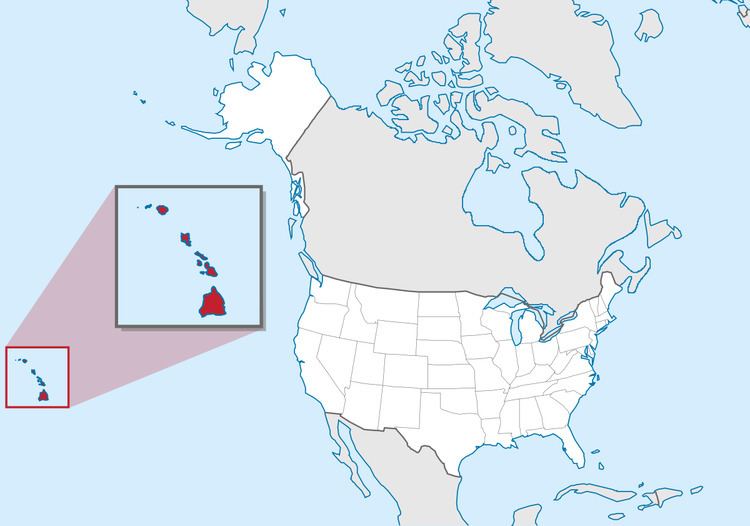 | ||
The majority of the environmental issues affecting Hawaii today are related to pressures from increasing human and animal population in the limited separation space of the islands.
Contents
Flora and fauna
A number of plant species are now extinct due to grazing livestock, and aggressive non-indigenous species taking over the land. Almost 40% of the endangered species in the United States are Hawaiian species, while nearly 75% of all U.S. extinctions have occurred in Hawaii.
The native flora comprises 89% endemic species, but the flora of Hawaii now includes more than 1044 introduced plant species; more than 100 of these are likely to be invasive in natural areas. Species such as the strawberry guava (Psidium cattleianum), and christmasberry (Schinus terebinthifolius) have spread across wide areas, competing with native species and altering the natural ecosystem. Recent invaders like miconia or velvet tree (Miconia calvescens) and Himalayan raspberry (Rubus ellipticus) are now permanently established over large areas. These species are predicted to decrease watershed function.
Prior to the arrival of non-natives, some bird species were made extinct, or pushed to near extinction from the collection of feathers by Native Hawaiians. With the arrival of James Cook in 1778, a new set of environmental threats emerged. Alien species such as cats, dogs, rabbits, pigs, and rats affected a number of indigenous species. Hawaii is known as the "extinction capital of the world" with the extinction of nearly half (140) of its historically recorded native bird species. Some of the alien species that are currently affecting Hawaii include cane toads, mongoose, coquí frogs, gall wasps, Mediterranean, Oriental, and melon flies that damage crops, ants that destroy native insects, and bacteria that infect waters.
Air quality
Compared with the mainland United States, Hawaii's rating on the air quality index is ranked among the best. Approximately 47% of all emissions are caused by burning fossil fuel for electricity production. Ground transport is the second biggest contributor with 22%, while air transport contributes 19%.
Water quality
The waters surrounding the Hawaiian Islands are affected by effluents generated and released from the islands themselves. Floating plastic garbage is a problem, and refuse from the Great Pacific Garbage Patch is affecting beaches in Hawaii, such as Kamilo Beach. The U.S. military used the ocean as a dumping ground for munitions from 1919 to 1970, cite news |title=Old Weapons Off Hawaii Should Stay Put, Army Says |publisher=Associated Press |accessdate=August 2010 |location=Honolulu, Hi. and the U.S. army dumped 16,000 mustard gas bombs in deep water (south of Pearl Harbor after World War II.)
Superfund sites
This is a list of Superfund sites in Hawaii designated under the Comprehensive Environmental Response, Compensation, and Liability Act (CERCLA) environmental law. The CERCLA federal law of 1980 authorized the United States Environmental Protection Agency (EPA) to create a list of polluted locations requiring a long-term response to clean up hazardous material contaminations. These locations are known as Superfund sites, and are placed on the National Priorities List (NPL). The NPL guides the EPA in "determining which sites warrant further investigation" for environmental remediation. As of May 1, 2010, there were three Superfund sites on the National Priorities List in Hawaii. One further site has been cleaned up and removed from the NPL; no sites are currently proposed for addition. All sites are on the island of Oahu.
Deleted from National Priorities List
